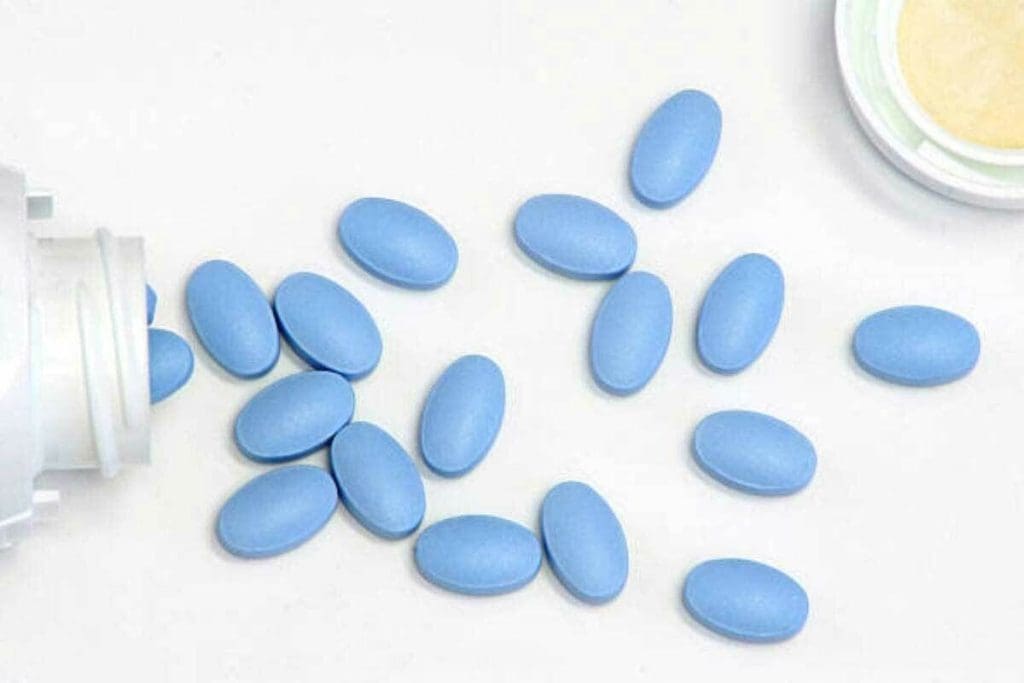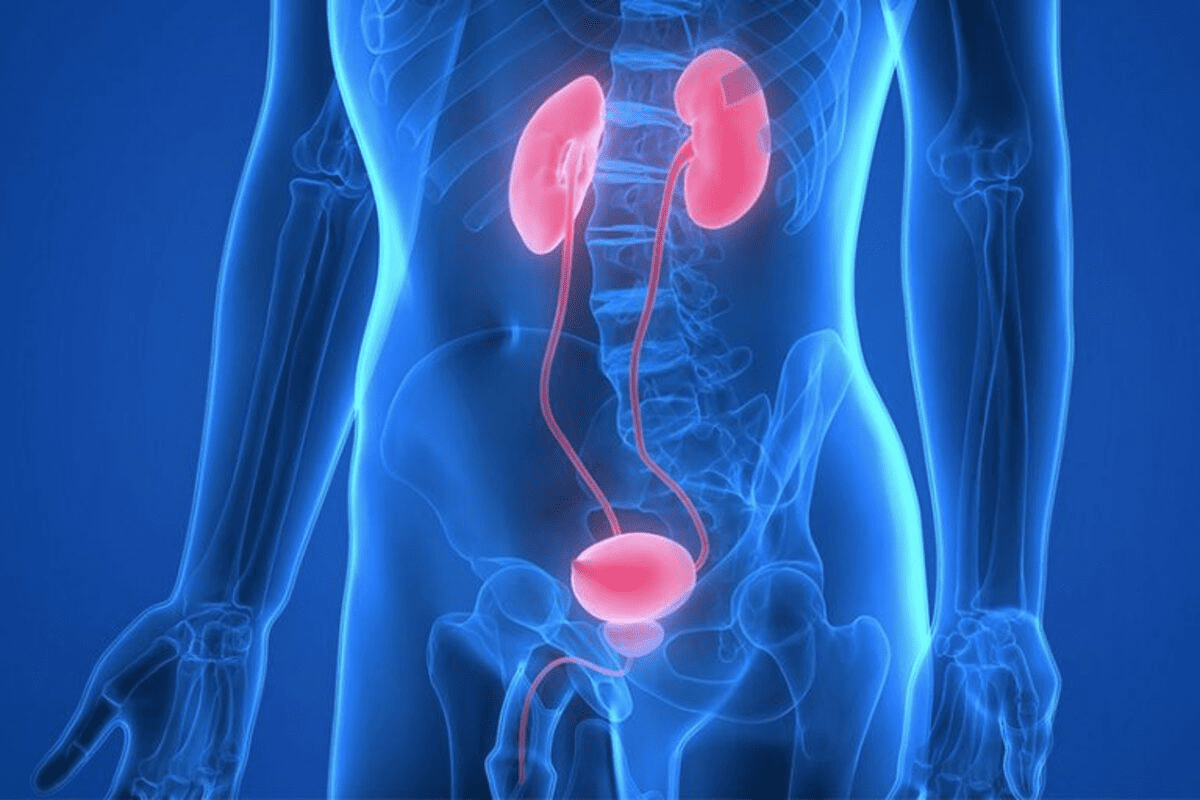Last Updated on November 27, 2025 by Bilal Hasdemir

Oral chemotherapy has changed cancer treatment for the better. It offers a simpler and more effective way than traditional intravenous chemotherapy. What type of cancer is treated with chemo pills? Chemo pills are now used to treat many cancers, like breast, colorectal, lung, leukemia, lymphoma, and multiple myeloma.
The best part about oral chemotherapy is that it can be taken at home. This means fewer trips to the hospital. But, it’s very important to follow the treatment plan closely. Not following the plan can make the treatment less effective.
Key Takeaways
- Oral chemotherapy is used to treat various types of cancer, including breast, colorectal, and lung cancer.
- Chemo pills offer a convenient alternative to traditional intravenous chemotherapy.
- Oral chemotherapy is often administered in cycles, with treatment periods followed by periods of rest.
- The frequency of oral chemotherapy can vary, including daily, weekly, or monthly treatments.
- Adhering to the prescribed treatment regimen is key for the success of oral chemotherapy.
Understanding Oral Chemotherapy: A Modern Approach to Cancer Treatment

Oral chemotherapy is a key part of cancer treatment today. It uses chemotherapy pills or liquids taken by mouth to fight cancer. This method is popular because it can make treatment easier and improve patient life.
Oral chemotherapy is a systemic treatment that targets cancer cells all over the body. Unlike traditional treatments given through veins, oral chemotherapy can be taken at home. But, it needs careful following of the treatment plan.
“The development of oral chemotherapy has been a significant advancement in cancer care, making treatment more flexible for patients.”
An Oncologist
The benefits of oral chemotherapy include:
- Convenience: Patients can take their medication at home, reducing hospital visits.
- Flexibility: Oral chemotherapy can be taken at any time, giving patients control over their schedule.
- Reduced discomfort: It avoids the discomfort and anxiety of traditional chemotherapy methods.
Oral chemotherapy targets fast-growing cells, like cancer cells. The exact way it works depends on the medication. Some common types include:
| Medication Type | Use | Examples |
| Alkylating Agents | Damage the DNA of cancer cells | Temozolomide, Cyclophosphamide |
| Antimetabolites | Interfere with DNA and RNA synthesis | Capecitabine, 5-Fluorouracil |
| Hormone Therapies | Block hormone production or action | Tamoxifen, Letrozole |
In conclusion, oral chemotherapy is a big step forward in cancer treatment. It offers a manageable and effective way to fight cancer. By understanding how it works and its benefits, patients can make better choices for their care.
What Types of Cancer Are Treated With Chemo Pills?

Oral chemotherapy is used for many cancers. It helps with common cancers like breast cancer and complex ones like leukemia.
Oral chemotherapy is a key treatment for several cancers. It’s used for breast cancer, colorectal cancer, leukemia, lymphoma, and multiple myeloma. Each cancer type has its own treatment plan, and oral chemotherapy offers flexibility and ease.
The success of oral chemotherapy depends on several things. These include the cancer’s stage, the patient’s health, and the cancer’s specific traits.
| Type of Cancer | Common Oral Chemotherapy Medications |
| Breast Cancer | Capecitabine, Tamoxifen |
| Colorectal Cancer | Capecitabine, Tegafur-uracil |
| Leukemia | Busulfan, Hydroxyurea |
| Lymphoma | Temozolomide, Lenalidomide |
| Multiple Myeloma | Lenalidomide, Pomalidomide |
Knowing which cancers oral chemotherapy can treat is important. It helps patients and doctors choose the best treatment options.
How Oral Chemotherapy Medications Work in the Body
Oral chemotherapy stops cancer cells from growing by interrupting their cell cycle. Oral chemotherapy medications aim to harm cancer cells less than healthy ones.
These medicines go into the bloodstream after being taken orally. How fast they are absorbed can change based on the medicine type, food in the stomach, and the patient’s health.
Getting these medicines to cancer cells is key to their success. They are made to reach and act on tumor tissues effectively.
Key Aspects of Oral Chemotherapy
- Absorption: The process by which oral chemotherapy medications are taken into the bloodstream.
- Distribution: The process by which these medications are transported to various parts of the body.
- Mechanism of Action: The specific way in which oral chemotherapy medications interfere with cancer cell growth.
| Characteristics | Oral Chemotherapy | Traditional Chemotherapy |
| Administration Method | Oral | Intravenous |
| Absorption | Gastrointestinal tract | Direct into bloodstream |
| Distribution | Systemic | Systemic |
Oral chemotherapy is a convenient and less invasive option for many cancers. Knowing how these medicines work helps both patients and doctors make better treatment choices.
Common Oral Chemotherapy Medications and Their Uses
Oral chemotherapy medications are becoming more common. Capecitabine, cyclophosphamide, and etoposide are often prescribed. They help treat different cancers, giving patients more options.
Capecitabine is used for breast, colorectal, and gastric cancers. It stops cancer cells from growing by messing with their DNA.
Cyclophosphamide is used for lymphoma, leukemia, and some solid tumors. It damages cancer cells’ DNA, stopping them from making copies.
The success of these drugs depends on the cancer type, stage, and patient’s health. Etoposide treats testicular, lung, and lymphoma cancers. It blocks an enzyme needed for cancer cells to divide.
| Medication | Common Uses | Mechanism of Action |
| Capecitabine | Breast, colorectal, gastric cancers | Interferes with DNA synthesis |
| Cyclophosphamide | Lymphoma, leukemia, solid tumors | Damages DNA of cancer cells |
| Etoposide | Testicular, lung cancer, lymphoma | Inhibits topoisomerase II enzyme |
It’s important to know about oral chemotherapy drugs and their uses. This helps doctors and patients make better treatment choices. It also sets the right expectations for treatment success.
Comparing Oral Chemotherapy to Traditional Infusion Methods
Oral chemotherapy and traditional infusion methods differ in how they are given, how well they work, and how patients feel. Oral chemotherapy comes in pills, making it easier for patients to take at home. This way, they can manage their treatment without going to the hospital.
Oral chemotherapy can be just as strong as the traditional kind given through an IV. The drugs in oral chemotherapy are made to reach cancer cells all over the body, just like IV treatments.
Key Differences:
- Oral chemotherapy is taken at home, making it more flexible.
- Traditional infusion methods need regular visits to the hospital.
- Both have their own side effects and ways to handle them.
Choosing between oral and IV chemotherapy depends on many things. These include the cancer type and stage, the patient’s health, and what they prefer. Here’s a quick comparison in a table.
| Characteristics | Oral Chemotherapy | Traditional Infusion Methods |
| Administration | Oral, at home | Intravenous, in a clinical setting |
| Effectiveness | Systemic, targets cancer cells | Systemic, targets cancer cells |
| Patient Experience | More flexible, less invasive | Requires regular hospital visits |
In the end, picking between oral and IV chemotherapy should be a team effort. A healthcare provider should help decide based on what’s best for the patient.
The Patient Experience: Taking Chemotherapy at Home
Many cancer patients take chemotherapy at home. This requires them to be very responsible and know about side effects. Oral chemotherapy at home comes with its own set of challenges and opportunities for managing treatment.
Patients must be careful with their daily medication routines. They need to know the right dosage, when to take it, and how it might interact with other drugs. It’s also important to know the common side effects like nausea, tiredness, or hair loss.
“The ability to take chemotherapy at home can be both a blessing and a challenge. It offers flexibility and comfort, but also requires a high degree of self-management and vigilance.”
An Expert Oncologist
To manage their treatment well, patients can try a few things:
- Keep a medication diary to track dosages and side effects.
- Set reminders for medication times.
- Store medications in a safe and accessible location.
- Regularly communicate with their healthcare team about any concerns or side effects.
A comparison of different oral chemotherapy medications and their common side effects is provided in the table below:
| Medication | Common Side Effects | Dosage Frequency |
| Capecitabine | Hand-foot syndrome, diarrhea | Twice daily |
| Temozolomide | Nausea, fatigue, hair loss | Once daily for 5 days |
| Lenalidomide | Fatigue, neutropenia, diarrhea | Once daily for 21 days, followed by 7 days off |
By understanding their treatment and managing side effects, patients can have a better experience with chemotherapy at home. It’s key for patients to work closely with their healthcare team to address any concerns and make necessary adjustments.
Safety Protocols for Handling Oral Chemotherapy
Handling oral chemotherapy needs strict safety rules to avoid accidents. This treatment is as strong as IV chemotherapy and must be handled with care. It’s important for patient and caregiver safety.
Proper Storage is key to avoiding accidents. Keep oral chemotherapy in a safe place, away from kids and pets. Store it in a cool, dry spot, as the instructions say. Always use the original container and label it with the patient’s name and dosage.
When handling oral chemotherapy, wear gloves to avoid skin contact. If you touch the pills, wash your hands well. Prepare or split the medication in a clean area, like a kitchen counter with a disposable cover.
Disposal of oral chemotherapy must follow your healthcare provider’s or pharmacist’s advice. Many places have special drop-off spots for hazardous waste, including unused meds. Never flush these down the toilet unless told to do so.
For more info on oral chemotherapy safety, check out Colorado Women’s Health. They offer detailed guides on cancer treatments, including oral chemotherapy.
In short, following safety rules for oral chemotherapy is essential. By storing, handling, and disposing of it correctly, we can reduce risks. This helps keep patients and caregivers safe while using this powerful cancer treatment.
Treatment Regimens and Duration for Oral Chemotherapy
It’s important for patients and doctors to know about oral chemotherapy. This method uses pills or capsules taken at home. The treatment plans vary based on the cancer type, stage, and patient needs.
The length of oral chemotherapy treatment can be from a few months to years. Several factors affect how long treatment lasts. These include how well the cancer responds to the medication, any side effects, and the patient’s overall health. Some patients need ongoing treatment, while others have breaks to recover.
Oral chemotherapy cycles can differ. Some patients take medication daily for a set time, then rest. The exact schedule depends on the patient’s condition and cancer type.
For example, some breast cancer patients take oral chemotherapy for 6 months to 2 years. Others might need shorter or longer treatments. Healthcare professionals closely monitor patients to adjust treatments and manage side effects.
In summary, oral chemotherapy plans are tailored to each patient. It’s key for patients to collaborate with their healthcare team. This way, they can understand their treatment plan and what to expect during their journey.
Managing Side Effects of Oral Chemotherapy
Oral chemotherapy can cause side effects that need to be managed well. It’s convenient to take at home but managing side effects is a challenge.
Side effects like fatigue, nausea, and hair loss can really affect a patient’s life. It’s important to manage these side effects well.
Common Side Effects and Their Management
- Fatigue: Patients should save energy, take breaks, and eat well.
- Nausea: Anti-nausea meds, changing what you eat, and avoiding smells can help.
- Hair Loss: Using scalp cooling devices and gentle hair care can lessen hair loss.
Oral chemotherapy side effects are different from IV chemotherapy side effects. Oral chemotherapy often causes more stomach problems. IV chemotherapy might cause more reactions during the infusion.
| Side Effect | Oral Chemotherapy | IV Chemotherapy |
| Fatigue | Common, managed with lifestyle adjustments | Common, managed with rest and nutrition |
| Nausea | Frequent, managed with anti-nausea medication | Frequent, managed with anti-nausea medication |
| Hair Loss | Variable, managed with scalp cooling | Common, managed with scalp cooling |
| Gastrointestinal Issues | More common due to oral administration | Less common |
“The management of side effects is key to keeping patients on track with their treatment. Good side effect management improves outcomes and quality of life.”An Expert Oncologist
Managing side effects well needs teamwork between patients, caregivers, and doctors. Knowing the side effects and having plans can help patients handle their treatment better.
In summary, while oral chemotherapy has its benefits, managing its side effects is vital for success. Being aware of side effects and using effective management strategies can help patients live better despite these effects.
Cost Considerations and Insurance Coverage
Oral chemotherapy is becoming more common. It’s important to understand its costs and insurance coverage. The cost can be high, affecting patients financially.
The price of oral chemotherapy changes based on the medication, dosage, and treatment length. Patients should talk to their healthcare provider about the costs of their treatment. Insurance coverage for oral chemotherapy also varies. Different insurance providers and policies have different rules.
Many insurance plans cover oral chemotherapy, but the coverage can vary. Some plans might have higher copays or need pre-authorization. Patients should check their insurance policy or call their provider to know what’s covered and what they’ll have to pay.
For those struggling financially, patient assistance programs (PAPs) can help. These programs, often sponsored by drug companies, can lower the cost of oral chemotherapy. Eligibility for PAPs depends on income and whether patients can afford their medication.
Patients can also get help from financial counselors or patient advocacy groups. These resources can guide on managing costs and finding financial help.
Future Developments in Oral Cancer Treatments
The future of oral cancer treatment is looking bright. Scientists are working hard to find new ways to fight cancer. They are discovering new medicines and new ways to treat the disease.
Emerging Medications and Therapies
Researchers are working on making oral chemotherapy better. They are looking at novel agents that can target cancer cells without harming healthy tissues.
Some exciting areas of research include:
- Creating more powerful and precise kinase inhibitors
- Testing combination therapies to improve treatment results
- Looking into how immunotherapy can help treat oral cancer
Research Directions
Oral oncology is making big strides. This is thanks to a deeper understanding of cancer biology and genetics. Future research will likely focus on:
- Personalized medicine that fits each patient’s needs
- Finding biomarkers for early detection and tracking of oral cancers
- Using nanotechnology to deliver oral chemotherapy
As these advancements continue, patients will have better and more comfortable treatment options. The dedication to research and innovation is key in the battle against oral cancer. It brings new hope for better outcomes.
Conclusion: The Evolving Role of Oral Chemotherapy in Cancer Care
Oral chemotherapy is changing how we treat cancer. It offers a more convenient and effective way than traditional methods. This method targets cancer cells in the body.
Research and development are making oral chemotherapy even better. Patients can take their treatment at home. But, it’s important to follow safety rules to avoid risks.
Oral chemotherapy will likely become even more important in cancer care. It’s convenient and works well. Knowing its benefits and challenges helps everyone involved in cancer treatment make better choices.
FAQ
What is oral chemotherapy?
Oral chemotherapy is a way to treat cancer with pills or capsules. It’s different from traditional IV treatments.
What types of cancer are treated with oral chemotherapy?
It’s used for cancers like breast, colon, and some lymphomas. It helps fight cancer in different ways.
How do oral chemotherapy medications work?
These medicines target and kill fast-growing cancer cells. They slow down tumors and stop cancer from spreading.
What are some common oral chemotherapy medications?
Common ones include capecitabine (Xeloda), cyclophosphamide, and etoposide. They treat various cancers.
How is oral chemotherapy different from traditional infusion methods?
Oral chemotherapy is taken at home. Traditional methods need IV treatments at a clinic.
What are the side effects of oral chemotherapy?
Side effects include nausea, fatigue, diarrhea, and hand-foot syndrome. But, doctors can help manage these.
How much does oral chemotherapy cost?
Costs vary based on the medication, dosage, and treatment length. Some programs help with expenses.
Is capecitabine a strong chemotherapy medication?
Capecitabine is used for certain cancers. Its strength depends on the patient and cancer type.
Why can’t you touch chemo pills?
Chemo pills are dangerous if not handled right. It’s important to follow safety rules to avoid exposure.
How many rounds of chemo is normal?
The number of rounds varies by cancer type and stage, and patient factors. Doctors decide based on these factors.
What is the future of oral cancer treatments?
Research aims to make treatments better, with fewer side effects. This will improve patient outcomes.
References
- Amjad, M. T. (2023). Cancer chemotherapy. In StatPearls. Retrieved October 10, 2025, from https://www.ncbi.nlm.nih.gov/books/NBK564367/






